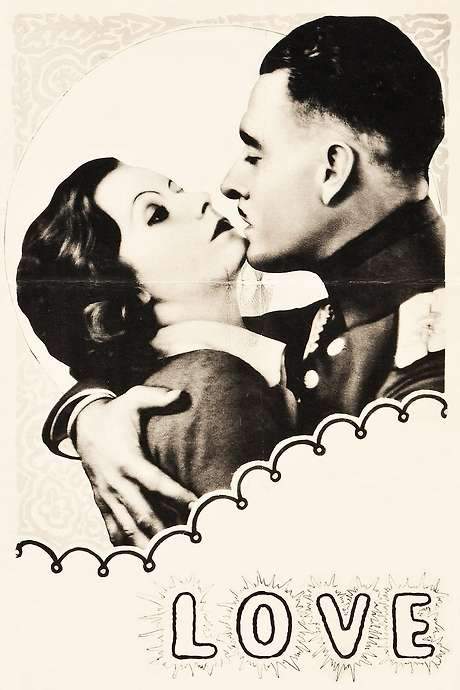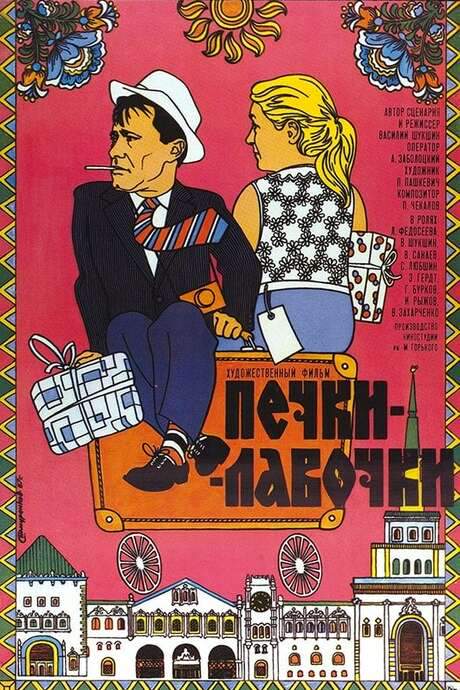
Love and Pigeons
Year: 1985
Runtime: 107 mins
Language: Russian
One of the most beloved Soviet comedies, adapted from Vladimir Gurkin’s stage play, follows Vasily, a modest village man who vacations at a resort and falls for the seductive city woman Raisa Zakharovna. After a brief, chaotic two‑week fling, he realizes he belongs at home, returning to his patient wife and their simple joys of love and caring for their pigeons. The film blends warm family moments with gentle satire of urban temptations.
Warning: spoilers below!
Haven’t seen Love and Pigeons yet? This summary contains major spoilers. Bookmark the page, watch the movie, and come back for the full breakdown. If you're ready, scroll on and relive the story!
Love and Pigeons (1985) – Full Plot Summary & Ending Explained
Read the complete plot breakdown of Love and Pigeons (1985), including all key story events, major twists, and the ending explained in detail. Discover what really happened—and what it all means.
Vasily Kuzyakin, Aleksandr Mikhaylov, is a forestry worker who joys in pigeon breeding and lives a quiet, earthy life in the countryside with his wife, Nadezhda, Nina Doroshina, and their three children. Their eldest daughter Lyudka, Yanina Lisovskaya, has just come back from the city after an unsuccessful marriage, while their son Lyonka, Igor Lyakh, is a buoyant, tech-curious boy, and the youngest daughter, Olya, Lada Sizonenko, remains the father’s cherished favorite. Life in the little village hums with routine and small tensions, and Nadezhda’s mood often skews toward gruff practicality. She views her husband’s pigeon obsession and his willingness to dip into family funds for birds as frivolous, and she needles him for every extra purchase with a quiet, simmering exasperation that colors the atmosphere at home.
Next door, an elderly pair—Grandma Shura, Natalya Tenyakova, and Uncle Mitya, Sergei Yursky—live with a steady rhythm of their own, marked by frequent, pointed disagreements that spill out into the street and invite family drama into the Kuzyakin orbit. Uncle Mitya’s attempts to keep his drinking in check provide a running counterpoint to the stricter, more pointed watchfulness of Baba Shura, and their small clashes pepper the days with a sour-but-humorous texture that the children observe with a mix of affection and embarrassment.
A turning point arrives when Vasily suffers an industrial injury that sends him away to a seaside sanatorium for treatment. There, the routine of his everyday life gives way to new possibilities as he meets Raisa Zakharovna, an expatriate from the city who works in the personnel department of the forestry enterprise. Raisa, a confident, talkative woman full of stories about psychics, telekinesis, astral bodies, and other sensational ideas, captivates him with a world that feels broader than the village. Their time together in the resort is light and intoxicating, and what begins as a holiday romance quickly becomes a pivotal shift in Vasily’s loyalties and priorities.
Upon receiving a letter from Vasily that he has left the family for Raisa, Nadezhda is overwhelmed with anger and hurt. The mood at home sours as the news lands like a bomb, and Raisa herself then appears at the Kuzyakins’ door, presenting herself as a potential mediator while withholding details about her own life. The confrontation that follows is raw and chaotic: Nadezhda lashes out at Raisa, who leaves with little more than a quiet, stubborn dignity. In the wake of this encounter, Nadezhda falls into a deep melancholy, her previous stubborn resilience giving way to a vulnerable sadness that unsettles the entire household. The children feel this strain acutely, and Lyonka’s anger—an impetuous mix of protectiveness and rage—reaches a boiling point as he grapples with the idea of his father’s absence.
Despite the hopeful surface of a union between Vasily and Raisa, their relationship struggles under the weight of class differences and the ache of separation from the family Vasily left behind. Vasily misses his old life and the people who gave him purpose, and the romance doesn’t truly settle into a lasting harmony. Eventually, he chooses to walk away from Raisa and return to the village, sensing that the old ties matter more than the glamorous allure of a new life. Nadezhda, still raw from the upheaval, grapples with her own feelings as the children—especially Lyudka—prepare for a future beyond the village. The household’s balance tilts as they navigate grief, pride, and the ache of separation, and the household members try to repair a sense of normalcy in the face of hurt.
In the days that follow, life remains tense but hopeful. Nadezhda lies despondent, the weight of the upheaval pressing down on her, while the children, Uncle Mitya, and Grandma Shura try to offer solace in their own imperfect, well-meaning ways. Lyudka contemplates moving to the city again, leaving behind the village that holds so many memories, and yet a moment of reconciliation appears on the horizon. Nadezhda confronts her own feelings and, in a quiet act of vulnerability, apologizes to her daughter. The siblings share a moment of shared sorrow and solidarity that brings them closer, even as the fear of a future without their father remains. Olya pleads with Lyudka not to leave, and the family joins together in a tearful, tender moment that underscores the fragility and resilience of their bonds.
Amid the emotional weather, Uncle Mitya’s quips and Baba Shura’s rough humor barely hide the undercurrents of pain, and the family’s collective vulnerability becomes a source of quiet strength. Then a hopeful thread re-emerges: Vasily and Nadezhda drift back toward each other, drawn by the shared acknowledgment of their love and the lives they built together. They arrange to meet away from prying eyes, and, after a period of two months of secret, clandestine meetings by the river, Vasily learns that Nadezhda is pregnant. This revelation crystallizes the decision to rebuild their life together. The couple returns home with a renewed sense of commitment, and they share a fragile, tentative happiness as they prepare for the future.
The film ends on a note that intertwines renewal with a return to the everyday rhythms they know. The family spirits are lifted as Lenka—who has returned from college—appears in the doorway, his presence signaling a bridge to the next generation. A sense of duty enters the frame as Lenka is soon sent to the army, yet the moment is not devoid of a bittersweet beauty: as Lenka heads off, he releases pigeons into the sky, a quiet, poetic image that mirrors Vasily’s lifelong devotion to his birds and to a family that endures despite trials. The dovecote, the birds, and the open sky stand in as symbols of loyalty, hope, and the stubborn, stubborn perseverance that defines this rural tapestry.
In the end, the story remains a portrait of a family stretched by dreams and disappointments, yet bound by a stubborn love and a shared history. It captures the tenderness and roughness of life in the countryside, the allure of city life, and the quiet, steadfast pull of home that keeps pulling people back, even when they wander far away. Through the seasons of hurt and healing, the Kuzyakin family learns to navigate the fragile balance between independence and togetherness, and their pigeons—tied to memories of better times and the promise of tomorrow—continue to circle the sky as a living reminder of where they began and how far they have come.
Last Updated: October 09, 2025 at 14:18
Unlock the Full Story of Love and Pigeons
Don't stop at just watching — explore Love and Pigeons in full detail. From the complete plot summary and scene-by-scene timeline to character breakdowns, thematic analysis, and a deep dive into the ending — every page helps you truly understand what Love and Pigeons is all about. Plus, discover what's next after the movie.
Love and Pigeons Timeline
Track the full timeline of Love and Pigeons with every major event arranged chronologically. Perfect for decoding non-linear storytelling, flashbacks, or parallel narratives with a clear scene-by-scene breakdown.

Similar Movies to Love and Pigeons
Discover movies like Love and Pigeons that share similar genres, themes, and storytelling elements. Whether you’re drawn to the atmosphere, character arcs, or plot structure, these curated recommendations will help you explore more films you’ll love.
Explore More About Movie Love and Pigeons
Love and Pigeons (1985) Scene-by-Scene Movie Timeline
Love and Pigeons (1985) Movie Characters, Themes & Settings
Love and Pigeons (1985) Spoiler-Free Summary & Key Flow
Movies Like Love and Pigeons – Similar Titles You’ll Enjoy
Love Birds (2012) Plot Summary & Ending Explained
Love Possibly (2018) Story Summary & Characters
Love Story (2017) Full Movie Breakdown
Iz zhizni otdykhayushchikh (1981) Full Movie Breakdown
My Love (2006) Film Overview & Timeline
The Little House in Kolomna (1913) Plot Summary & Ending Explained
What Happens When Love Comes to Town (1984) Plot Summary & Ending Explained
The Seagull (1972) Full Movie Breakdown
Love (1927) Plot Summary & Ending Explained
The Love of Mankind (1972) Movie Recap & Themes
Comrade Nikanorova Awaits You (1979) Spoiler-Packed Plot Recap
Happy-Go-Lucky (1972) Full Movie Breakdown
Love and the City (2009) Spoiler-Packed Plot Recap
The Marriage of Balzaminov (1964) Film Overview & Timeline
A Slave of Love (1976) Detailed Story Recap

















